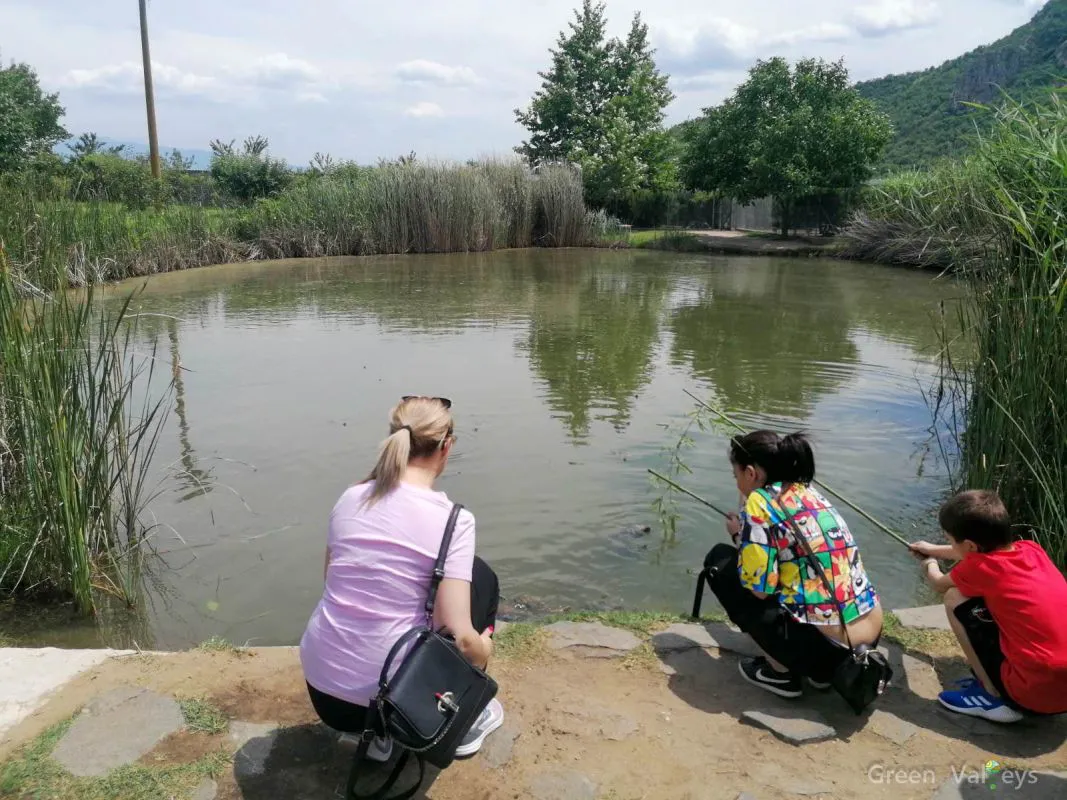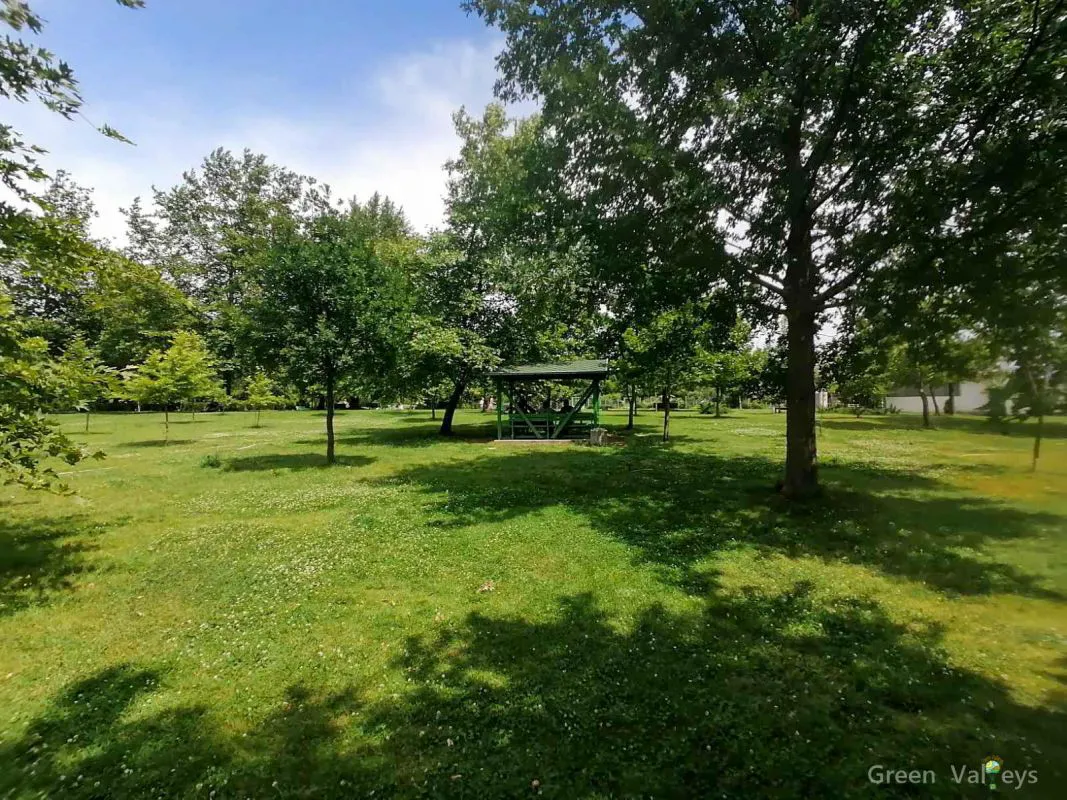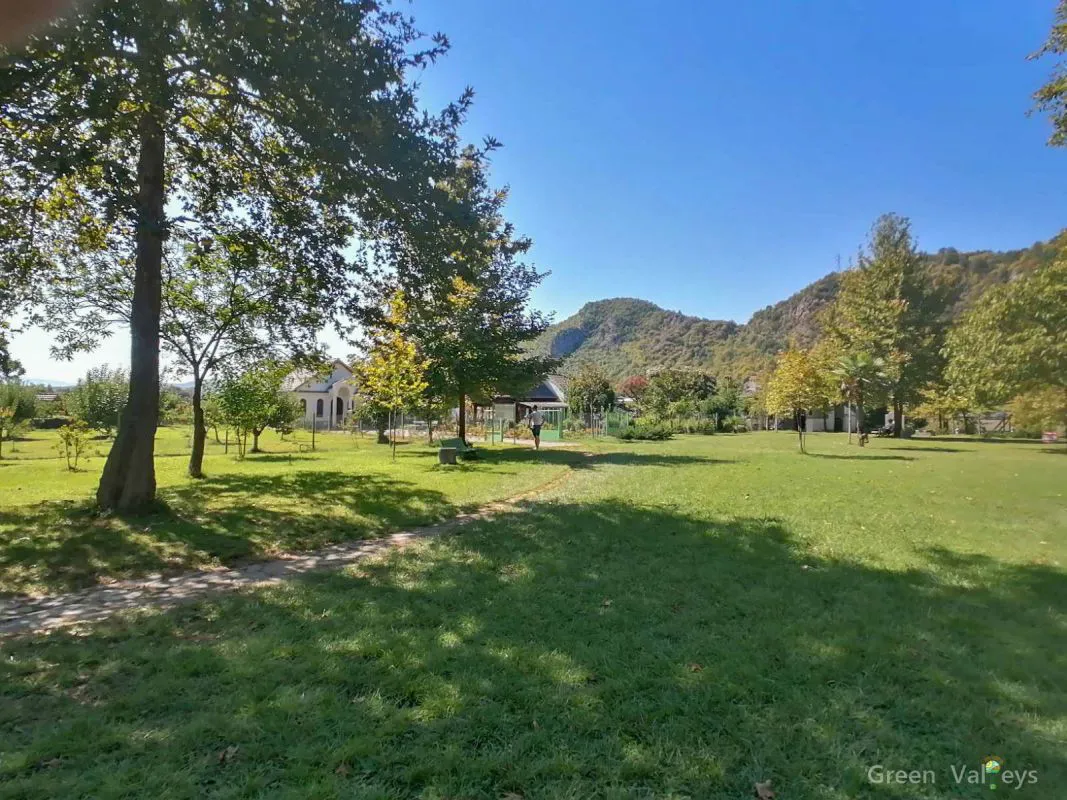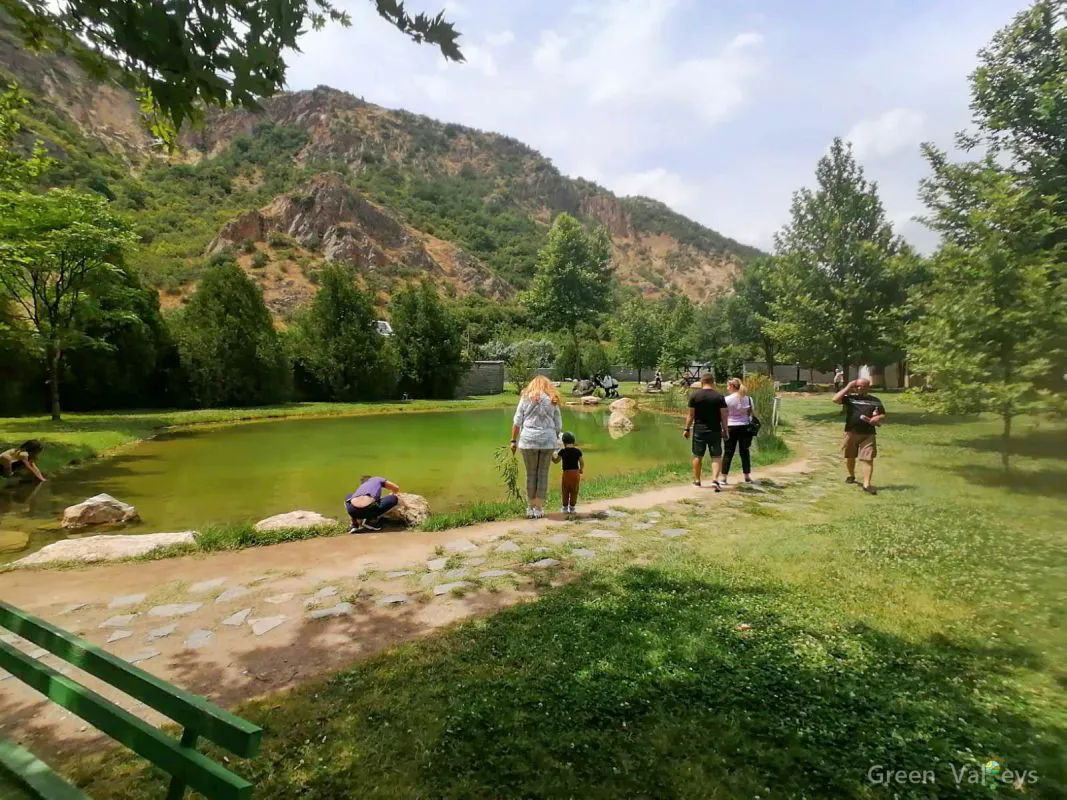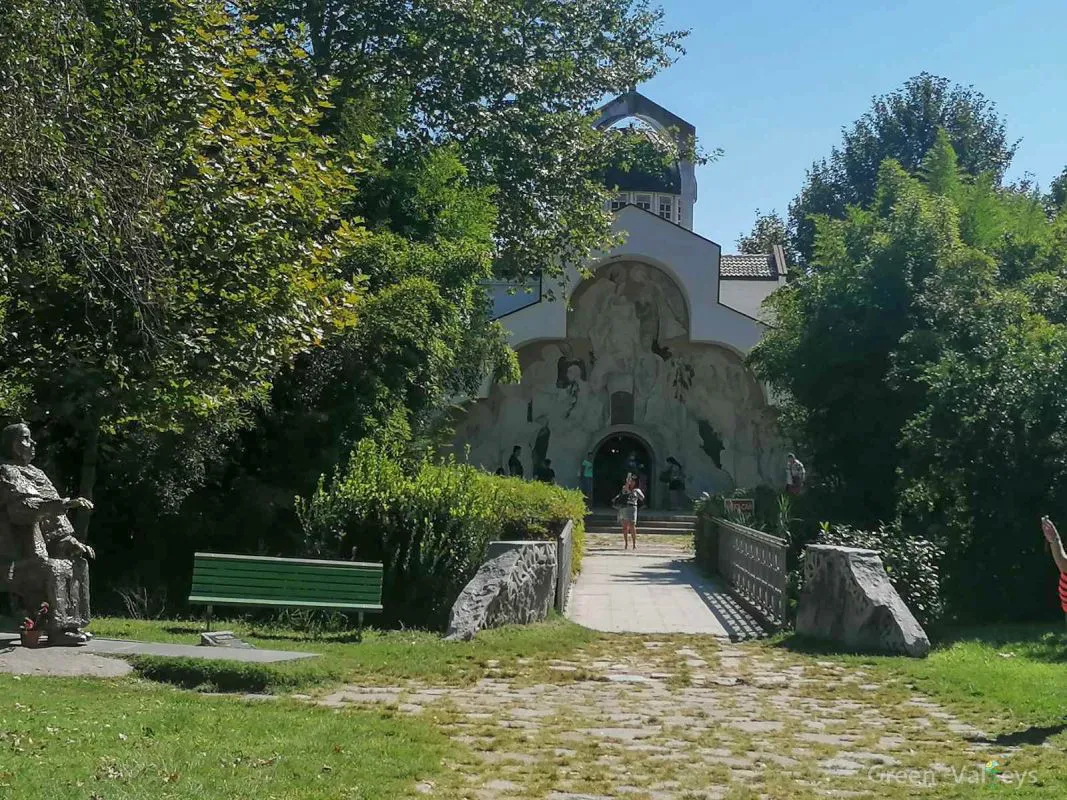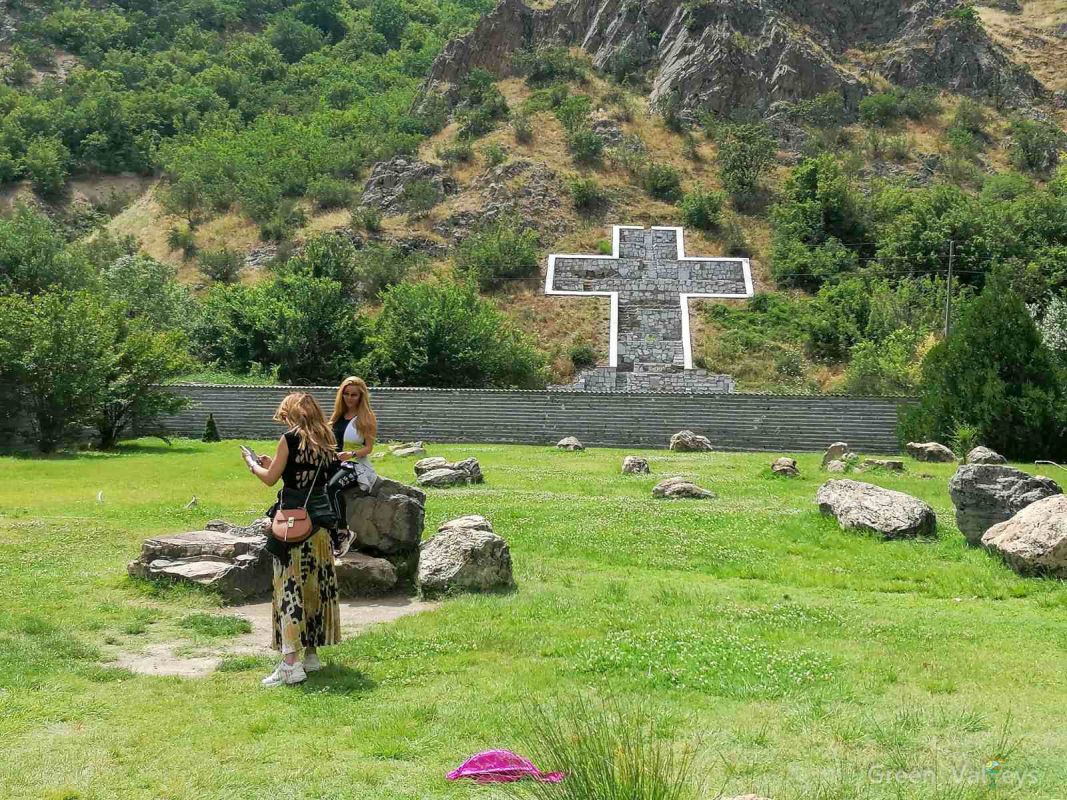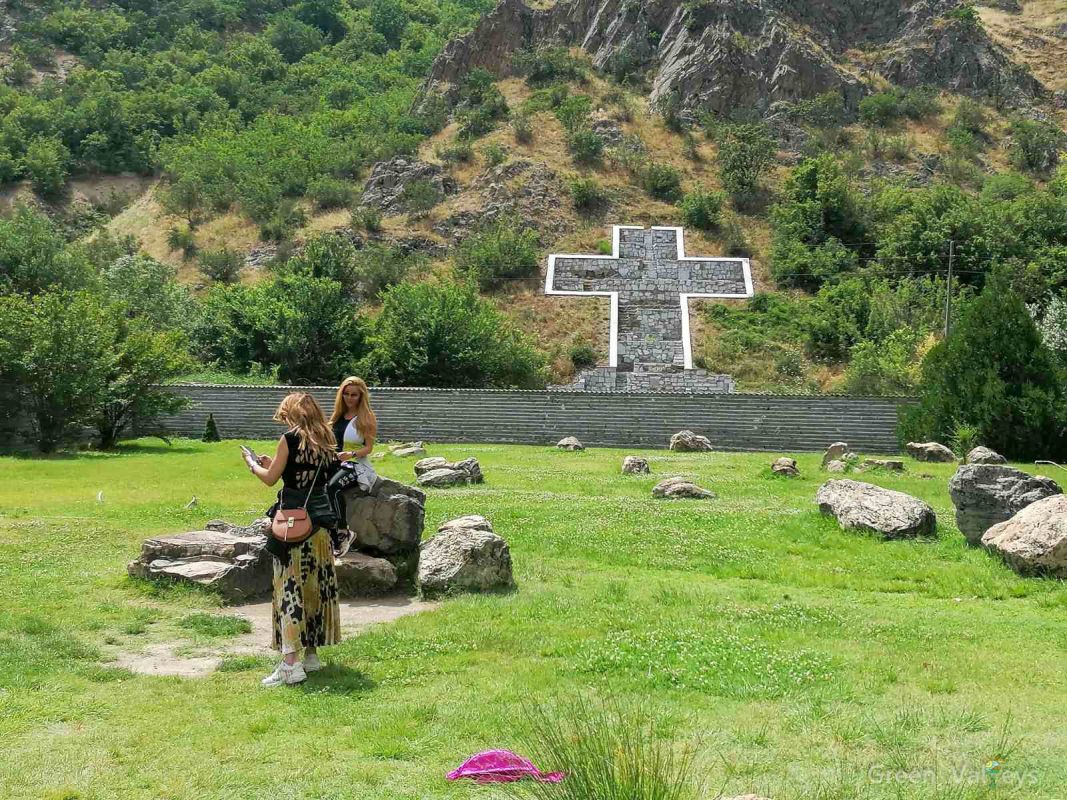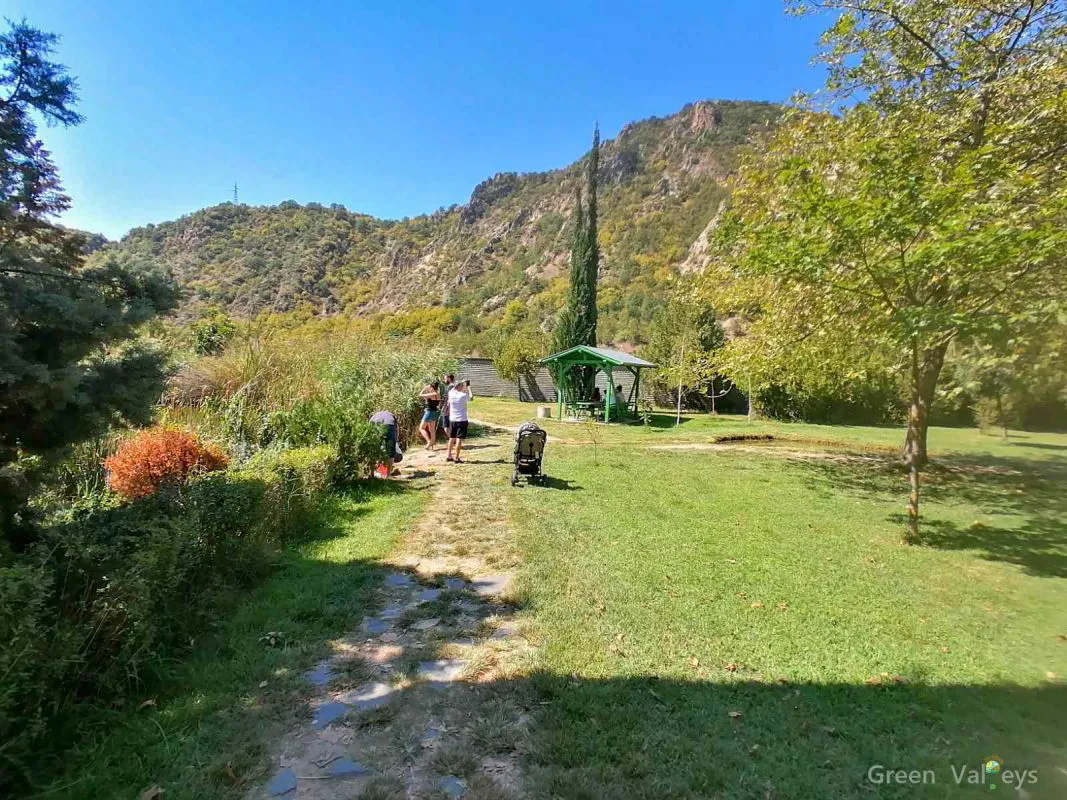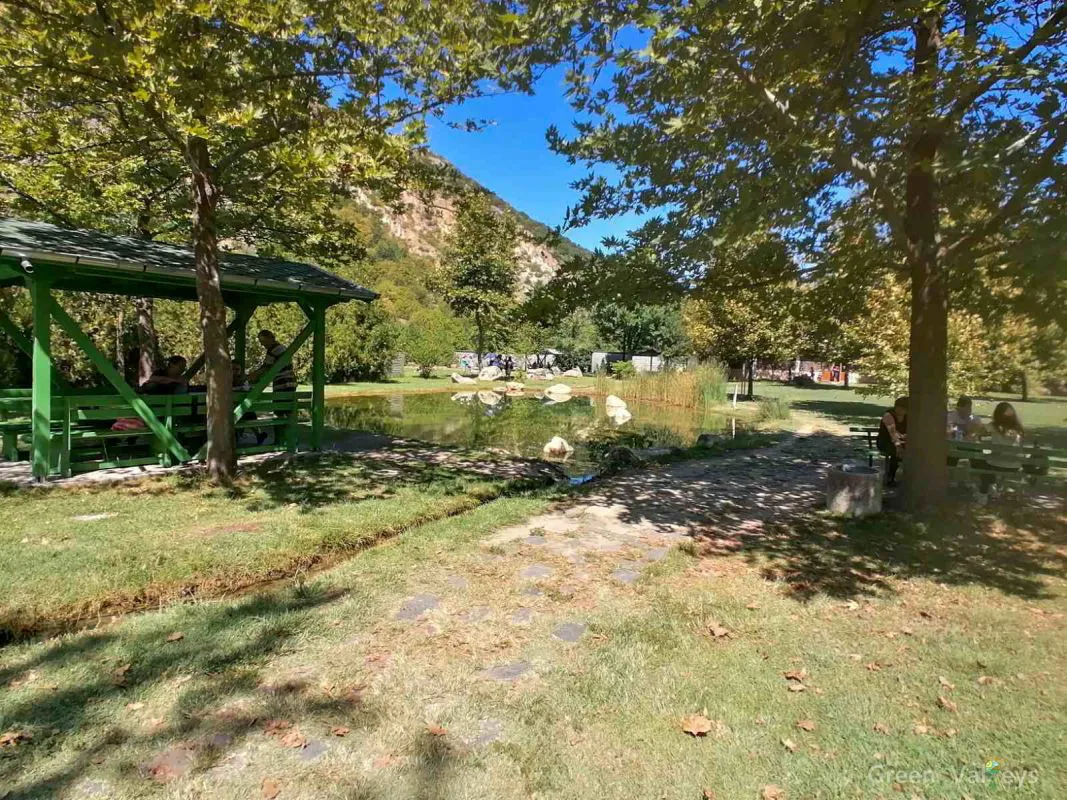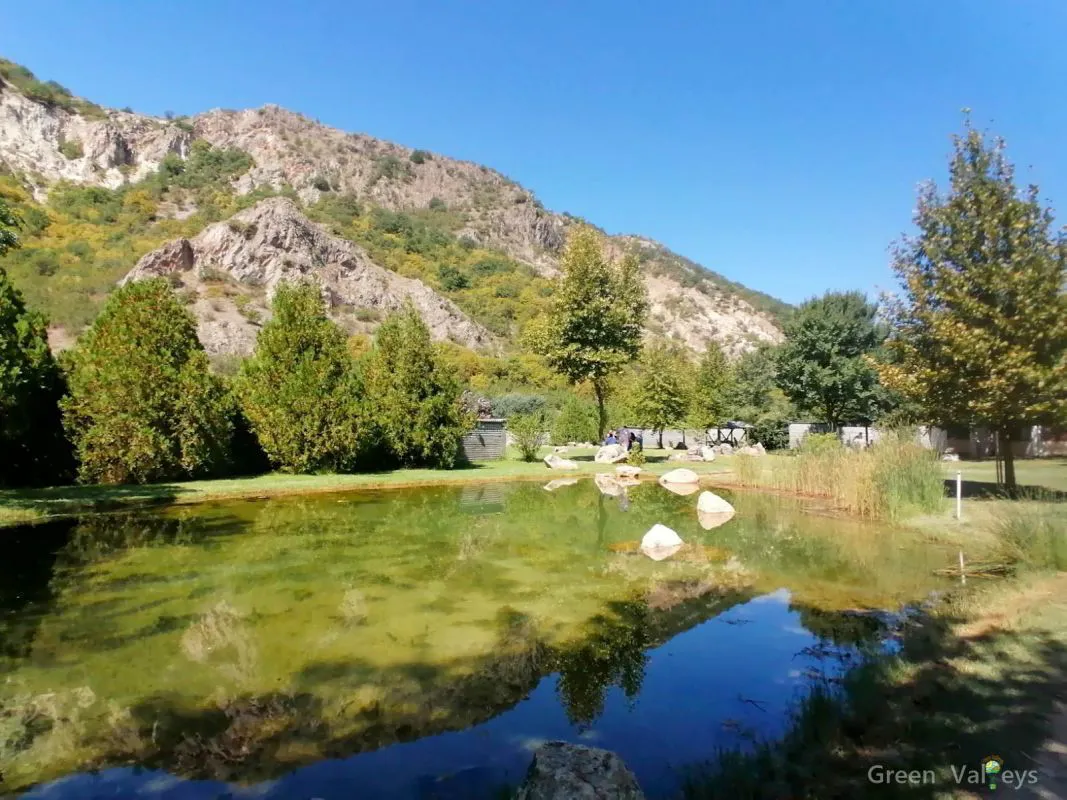Rupite, the Rozhen monastery and Melnik
Tour schedule:
From 75 BGN
Price for Adult: 85 BGN with VAT.
Price for Child (3-16): 75 BGN with VAT.
Price for Senior/Student: 75 BGN with VAT.
Price for Group over 4 people: 80 BGN with VAT.
Tour Details
We will take you on a journey through the wonders at the south part of Bulgaria. We will visit one of the most important temples of Bulgarian history.
Reverend Stoyna also known as Vanga’s spiritual teacher. The prophetess of Petrich has repeatedly acknowledged her as her forerunner and often sent the sick to seek healing at her grave.
The memorial temple “St. Petka of Bulgaria” was built in 1994. The locality is mostly famous as a place related to the prophet Vanga. This attracts thousands of worshippers and tourists.
Rozhen Monastery of the Nativity of the Mother of God. In fact this is the biggest monastery in the Pirin Mountains in southwestern Bulgaria, nestled in the Melnik Earth Pyramids.
The town of Melnik is the smallest town in Bulgaria (208 residents). As a matter of fact the finds from the antiquity discovered upon the archaeological diggings testify for its centuries-old history.
Highlights:
∗ Our team will be waiting to greet you at the parking behind Alexander Nevski Cathedral, http://!!!Green Valleys meeting point SOFIA google/maps!!!, or you can arrange your pick up point in advance with member of our booking team.
∗ Visit Rupite - The memorial temple “St. Petka of Bulgaria”. Bulgarian medium Baba Vanga lived and was buried.
∗ Discover the miraculous Reverend Stoyna - Vanga's spiritual teacher.
∗ Lunch and relax in a traditional restaurant in the town of Melnik while enjoying deliciously prepared food and lovely atmosphere.
∗ Enjoyable afternoon in the architectural and ethnographic town of Melnik, time for souvenirs and a walk.
∗ Discover The Rozhen Monastery of the Nativity of the Mother of God - It is the biggest monastery in the Pirin Mountain.
∗ Departing back to the town of Sofia.
In case of medical issues or allergies you should always consult your tour representative if you are not sure of what ingredients a dish contains.
Places You’ll See
Tour Interary:
Day Tour
∗ 07:30: Tour starts from the parking behind Alexander Nevski Cathedral or at your preferable location if requested in advance at the time of booking. The trip to the Rupite – The memorial temple “St. Petka of Bulgaria” lasts about two and a half hours through picturesque Bulgarian nature.
∗ 10:00 – 11:00: Visit Rupite – The memorial temple St. Petka of Bulgaria. Bulgarian medium Baba Vanga lived and was buried.
∗ 11:30 – 12:30: Discover the miraculous Reverend Stoyna – Vanga’s spiritual teacher.
∗ 13:00 – 14:00: Lunch and relax in a traditional restaurant in the town of Melnik while enjoying deliciously prepared food and lovely atmosphere.
∗ 14:30 – 15:30: Enjoyable afternoon in the architectural and ethnographic town of Melnik, time for souvenirs and a walk.
∗ 16:00 – 16:30: Discover The Rozhen Monastery of the Nativity of the Mother of God – It is the biggest monastery in the Pirin Mountain.
∗ 17:00: Departing back to the town of Sofia.
∗ 19:30: Expected time of arrival in Sofia at the parking lot behind Alexander Nevsky Cathedral or at your preferable location if requested in advance at the time of booking.
We miss you already- Hope that will see you again.
See you.
Pick up/ Drop off points:
Our team will be waiting to greet you at the parking behind Alexander Nevski Cathedral, http://!!!Green Valleys meeting point SOFIA google/maps!!!, or you can arranged your Pick up point in advance with member of our booking team.
Please arrive 15 minutes before your scheduled departure time for boarding.
Rupite “St. Petka of Bulgaria”,
The memorial temple “St. Petka of Bulgaria”, built in 1994 is situated in the locality of Rupite. The locality is mostly famous as a place related to the prophet Vanga, and by this it attracts thousands of worshippers and tourists. Vangeliya Gushterova (1911 – 1996), is the full name of the prophet, was famous around the whole world with her multiple prophecies which had come true. According to a legend, Vanga lost her sight in her early childhood years in a storm, but during the accident she had a vision, which gave her the unique abilities. In the last years of her life, Vanga lived in a small house in the Rupite, because according to her relatives she considered the area an energy source and collected her powers from it. The church was built by monetary means, provided by Vanga, and it is notable for its wall paintings.
Rozhen Monastery of the Nativity of the Mother of God
s the biggest monastery in the Pirin Mountains in southwestern Bulgaria, nestled in the Melnik Earth Pyramids. It is one of the few medieval Bulgarian monasteries well preserved until today.
The earliest archaeological evidence of medieval life at the place is a grave with a few coins and decorations from the time of Byzantine Emperor Michael VIII Palaiologos (1259–1282). Some other items also date to the 13th century while the marble frieze above the central gate of the church dates to the 13th or 14th century. A couple of new buildings were constructed in the monastery at the time of Despot Alexius Slav. The earliest written source testifying to the monastery’s existence is a note on a chant book from 1551, today in the Great Lavra library on Mount Athos.
Melnik
The smallest town in Bulgaria (208 residents), Melnik, is nested in the south slopes of Pirin, among sand pyramids with queer forms. The finds from the antiquity discovered upon the archaeological diggings testify for its centuries-old history. The first written pieces of evidence for the Melnik Fortress refer to the beginning of the 11th century. The first settlers on the territory of contemporary Melnik were the Thracians, and more particularly the Thracian tribe Maedi, of which the legendary rebel Spartacus originated. A few centuries later, the Romans lived on this ground. This proves the ancient Roman bridge, which is still preserved in the town of Melnik. The Slavs, who were consequently residing on this territory, had called their settlement Melnik, because of the surrounding sand pyramids. The name comes from the Slavonic word “Mel”, which means white clay, crayon.
In 1215 Melnik turned into a capital of an independent feudal principality, ruled by Despot Alexius Slav. The ruins of his fortress are preserved to the present days, near the town.
Food:
Why to choose us:
(pre arrangement required)
(pre arrangement required)
Rupite, the Rozhen monastery and Melnik
Tour schedule:
From 75 BGN
Price for Adult: 85 BGN with VAT,
Price for Child (3-16): 75 BGN with VAT.
Price for Senior/Student: 75 BGN with VAT.
Price for Group over 4 people: 80 BGN with VAT.
Price included:
∗ Returning transport will be by coach from pick up point and drop off point.
∗ Visit to the temple St. Petka of Bulgaria.
∗ Visit to the miraculous Reverend Stoyna.
∗ Visit to the town of Melnik.
∗ Visit to the Rozhen Monastery
∗ Professional local guide included.
∗ Insurance included.
Price excluded:
∗ Personal expenses.
∗ Entrance fee for all museums and attractions.


